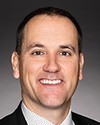It's a good question, and in many ways it's hard to know what the cost would be for the federal government. Obviously, pay equity is the responsibility of employers, to be paying their employees equally.
The federal government has said that it's committed to a proactive regime. That's obviously going to involve more compliance, more regulatory burden on the federal government, so there will be a cost. I don't know what that would be, but as you've said, there was no money earmarked.
There's no legislation and no money earmarked. To us, that's two causes for concern. This is, as you said, one area where the government can demonstrate in real terms its commitment to gender equity. We certainly hope they follow through on the budget commitment to do so.





